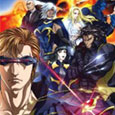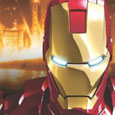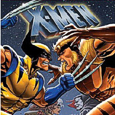Madhouse (2011), Sony Pictures Home Entertainment (April 24, 2012), 2 discs, 287 minutes plus supplements, 1.85:1 ratio, Dolby Digital 5.1, Not Rated, Retail: $19.99
Storyboard:
The X-Men reunite a year after the passing of Jean Grey, in order to investigate the disappearance of a mutant girl in Japan.
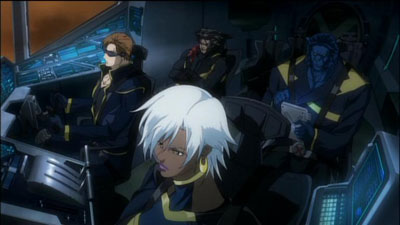
The Sweatbox Review:
Marvel Comics appears to be taking over the world right now, at least in terms of its feature film franchises. On the animation side of things, however, Marvel’s record has been a bit spotty, though there have been a few highlights, including the respectful 1990s adaptations (though there were a couple of lousy shows back then, too), and a few recent direct-to-video offerings that have gotten good notices. Still, the Marvel cartoon projects simply haven’t gotten as much fan respect overall as the DC shows, though I’d argue that neither filmography is beyond reproach. Nevertheless, Marvel made an interesting move in 2009 when they reached an agreement with Japanese studio Madhouse to create four Marvel series for the Japanese market.
It made good sense. Marvel had the characters, and Madhouse had the animation chops, known for creating visually striking TV shows and films that resonated with their audiences, e.g. Ninja Scroll, Trigun, Millennium Actress, and Osamu Tezuka’s Metropolis. Madhouse would be given a large amount of latitude, but with the creative input of Marvel writer Warren Ellis. Ellis would provide story direction, ensuring that the characters would be recognizable to their existing fans, while the anime creators would bring something fresh to their interpretations.
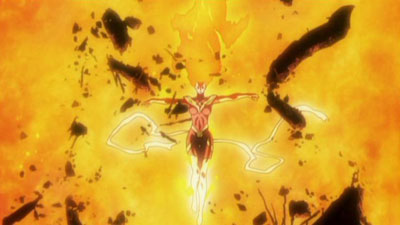
X-Men fits quite comfortably with the comic book continuity, at least to the casual fan. The X-Men anime serves up a cast of familiar characters, including the team’s wheelchair-bound leader Professor Xavier, and its field leader Cyclops, plus Wolverine, Storm, and Beast. It even opens with the end of the famous Dark Phoenix storyline, where powerful telepath Jean Grey sacrificed herself to stop the Phoenix Force from using her to… whatever it was trying to do. Destroy the world and stuff. It’s a strong beginning for the show, and provides its ongoing dramatic and emotional core.
In the aftermath of the Dark Phoenix battle, the X-Men disband, with each character dealing with the passing of Jean in his or her own way, with Cyclops being especially scarred. Professor X brings the team back together a year later when a call for help from Japan is received, with a set of parents looking for their missing girl. Their daughter Hisako is a mutant, and her disappearance is only the beginning of a set of mysteries involving that region of Japan. This is a region that seems to defy mutant detection by Professor X or his Cerebro device, despite the fact that there are an unusual amount of mutants in the area.

The X-Men go to investigate, and run afoul of the U-Men, who are gathering young mutants in order to harvest their organs. They find their former adversary Emma Frost, and then young Hisako, who joins the team as Armor, getting training back in the United States. After some discussion, Emma also joins the team. Once the X-Men return to Japan, they continue their investigation and discover an institute whose female director was once romantically tied to Professor X. This doctor, Yui Sasaki, knows Hisako, and appears to be hiding some dark secrets. Meanwhile, the X-Men also have to deal with the involvement of their nemeses from The Inner Circle, to which Emma Frost used to belong.
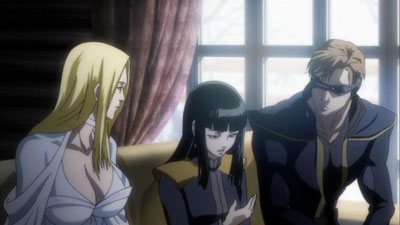
Emma’s presence on the X-Men is a thorn in Cyclops’ side, as he remembers seeing Emma at the scene of Jean’s death (Emma denies her presence there). Cyke doesn’t trust Emma, and he’s also not willing to give Hisako— who was originally trained by Emma— much of a chance, either. This conflict drives much of the emotional narrative for the story. Wolverine, of course, continuously calls Cyclops on his stubborn paranoia, and even Beast and Storm (the most undeveloped characters in this story) take Emma’s side.
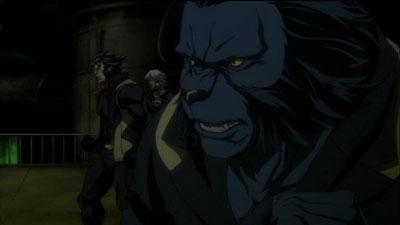
By the twelfth chapter, multiple secrets are revealed, including a major one involving the story’s main threat and his origins. The battle at the end is reminiscent of other anime stories— philosophical, a bit confusing, and tonally a big shift from what had come before. (Akira certainly came to mind while viewing this.) There is a sense of the creators trying to reach for a deepness that the story can’t provide, but to their credit it only falls a little flat. Overall, this is an exciting adventure with an interesting take on the familiar characters.
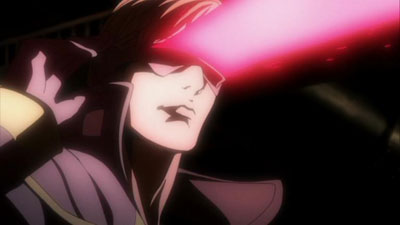
Your own enjoyment will likely depend on how much you like the X-Men, and how much you like anime. I have only a general familiarity with the characters, gained more from film and television than the comics themselves, so I may be more forgiving than hard-core fans. The animation style, meanwhile, is likely to divide viewers. It is definitely an anime project— the character designs include long swooping noses, and the women have unbelievable curves (not much different than comic book art, in that respect). Though characters are very detailed, the animation is pulled off beautifully, aided by copious use of camera moves. (I really liked the character designs, actually, except for Cyclops’ shoulder pads.)
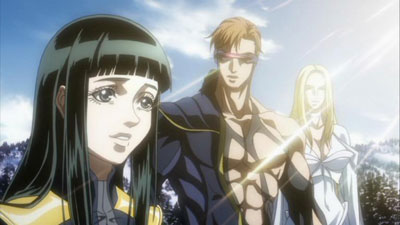
Visually, there is an over-reliance on diffuse light effects. And, of course, the animation direction focuses on delivering the BIG moments. Money is sometimes saved by not showing character’s lips move as they speak, but when it’s time for action, all the money’s on the screen. Character movement is extremely dynamic when called for, and the animation can be very impressive. And even when a character is otherwise still, there is hair blowing furiously in the wind.
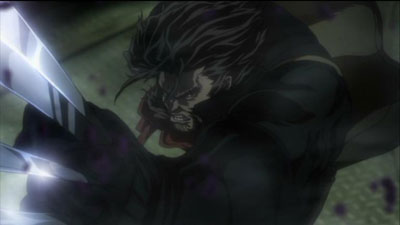
The story provides ample opportunity for conflict, whether from its lead characters, or the “villains.” I wasn’t always sold on characters’ emotions, and their philosophical musings occasionally seemed out of place, but I find that in a lot of anime. This series has it where it counts: diverse and interesting characters, great design, and plenty of action. It’s not all action, though, as there are also lots of quiet conversation scenes, with ample opportunity to get inside the character’s heads. This is a perfect blend of X-Men and anime, for better or worse. Hopefully, X-Men fans will keep an open mind. Me, I liked it.
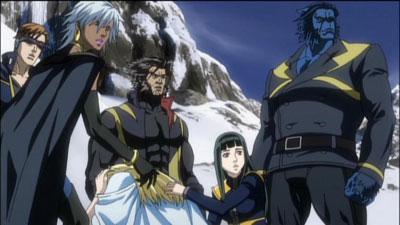
Is This Thing Loaded?
This release has a nice set of bonuses on it. The first disc holds two featurettes, beginning with The Marvel Anime Universe: Re-Examining The X-Men (9:05). This features Marvel multi-media executives and series story consultant Warren Ellis discussing bringing the X-Men to its anime incarnation.
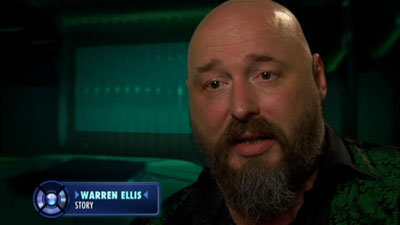
Their insight is interesting, and they all seem quite enthusiastic with the results. The same folks appear in X-Men: A Team Of Outsiders (10:36), which is more of an overview of the comic’s appeal.
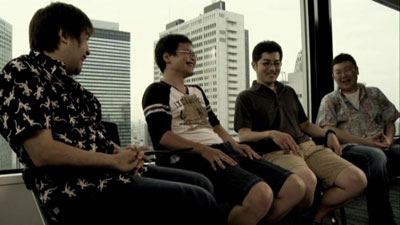
The second disc has the final and best bonus feature, Special Talk Session: Marvel Anime’s X-Men And Blade (32:00) a great discussion among the creators of the anime, naturally in Japanese but subtitled in English. (The talk of Blade is minimal; the focus is certainly on X-Men.) From the director to the writer and designers, we are offered a dandy behind-the-scenes discussion of how they crafted the series, and the choices they made. Much of it is talking heads, but we do get to see some production artwork as well.
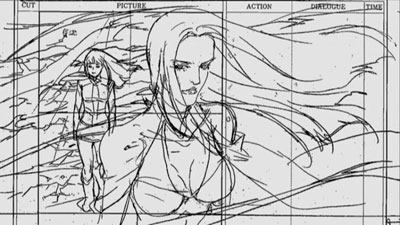
A set of Previews also appears on the second disc, including those for Attack of The Show, Moneyball, Starship Troopers: Invasion, Resident Evil: Damnation, an anime film whose name is strangely never revealed, and Sky Crawlers.
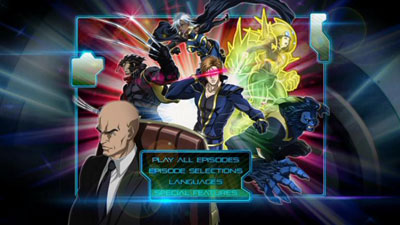
Case Study:
The 2 discs come in a keepcase with a disc on each side of the interior. An insert inside advertises the TV show Attack of The Show.
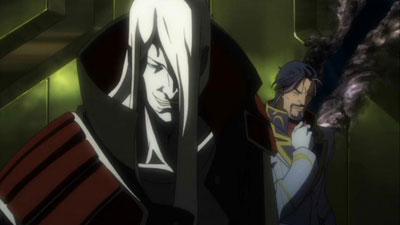
Ink And Paint:
The video transfer is excellent. For a show that uses a lot of camera moves and fast action, it all holds together very well on these DVDs. Shimmer is minimal, and the image is totally clean. The only detriment comes with the visual style, which often uses diffuse lighting effects that can drown out details. It would have been interesting to see if a Blu-ray would look any better, but I suspect the difference would have been negligible.

Scratch Tracks:
These discs default to the Japanese Dolby Digital 5.1 track. Both it and the English 5.1 track excel at delivering a complete sound experience, with solid bass and prominent surround effects. The sound mix is just as dynamic as the visuals, and that’s saying something.
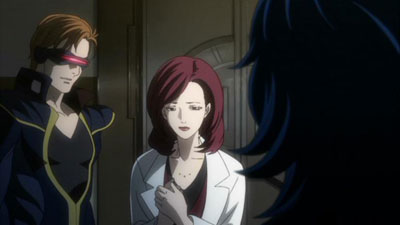
Final Cut:
It is quite conceivable that an experiment such as this will not satisfy either anime or X-Men fans, but as a casual fan of both, I found this series to be very enjoyable. For those that don’t care for the anime stylings, I would argue that the visuals for this show are leagues beyond what we saw on the 1990s animated X-Men show. The DVD set offers a great picture and fantastic sound, including the original Japanese track. Extras are also better than what we can usually expect for animated TV shows, making this DVD set a nice surprise all around.
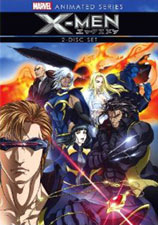 | ||
 |


